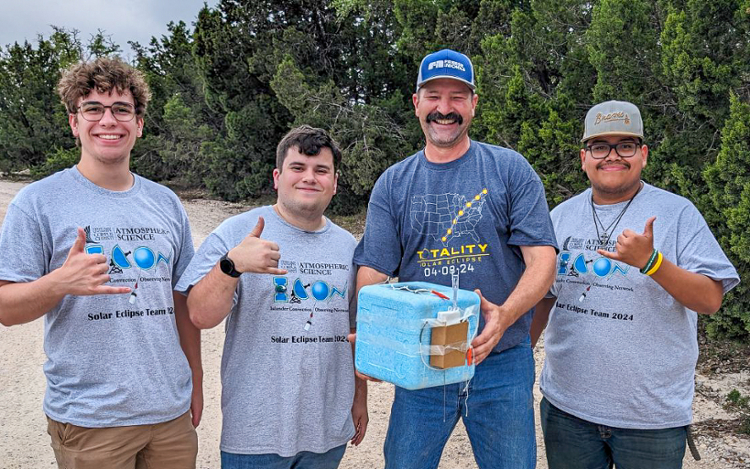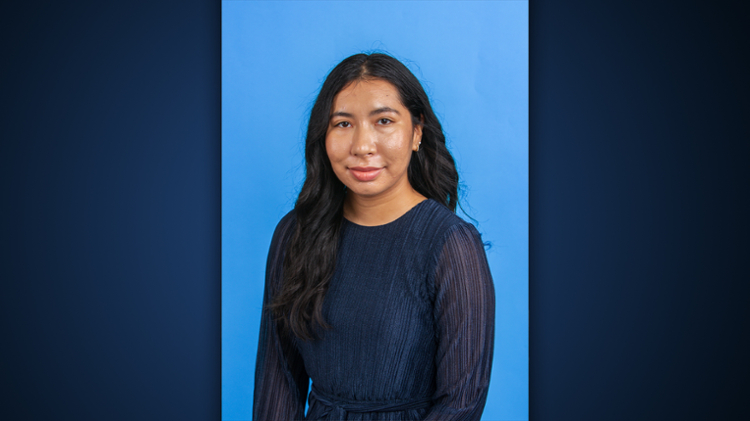TAMU-CC Researcher Awarded Department of Defense Grant for Three-Year Study of Indian Ocean
CORPUS CHRISTI, Texas – Looking past the Island University’s coastal waters, Dr. Toshiaki Shinoda, Associate Professor of Physical and Environmental Sciences at Texas A&M University-Corpus Christi, is taking a deeper look at the Indian Ocean and Maritime Continent.
Recently earning an award of $518,458 from the U.S. Department of Defense, Shinoda proposed research to enhance the understanding of the physics of oceanic and atmospheric phenomena over the Indian Ocean and Maritime Continent, an area in Southeast Asia that includes the Philippines, Indonesia, and Papua New Guinea. It is a project that, in the last 10 years, has been one of the priority areas for the Office of Naval Research (ONR) Marine Meteorology and Physical Oceanography programs.
“This research is important because the physical processes of a variety of phenomena in the Indian Ocean and Maritime Continent are not well understood,” Shinoda, who has worked at the Island University since 2013, said. “The Indian Ocean and Maritime Continent are interesting areas in terms of ocean dynamics and air-sea interaction. The results will improve our understanding of physical processes over these oceans and benefit the scientific community.”
Shinoda’s project follows recent research campaigns sponsored by the ONR including “Oceanic Control of Monsoon Intra-seasonal Oscillations in the Tropical Indian Ocean and the Bay of Bengal,” “Propagation of Intra-Seasonal Tropical Oscillations,” “Northern Arabian Sea Circulation – autonomous research,” and “Littoral Air-Sea Processes/Madden-Julian Oscillation.”
“The basic physical mechanisms of a variety of phenomena over the Indian Ocean and Maritime Continent are explored by a combination of the analyses of satellite and field observation data and numerical model experiments,” Shinoda said.
Along with the goal of the proposed research, the results of the project may further the understanding of the diurnal to intra-seasonal time scales, helping to improve the prediction of intra-seasonal time scale ocean/atmosphere variability in these regions. In particular, a substantial amount of the data collected during the ONR field campaigns will be effectively used for evaluating the performance of the Navy Earth System Model, which will provide global forecasts of ocean and atmospheric circulations and sea ice distribution.
“Although the ONR field campaigns improved our knowledge of upper ocean and air-sea interaction in these regions, there are still a variety of atmospheric and oceanic phenomena whose physical mechanisms are not well understood,” Shinoda said. “These include upper ocean variability generated by the Madden-Julian Oscillation (MJO) over the Maritime Continent region and their influence on MJO propagation.”
With research currently underway, Shinoda says it will take some time before data and findings can be produced by his team of research scientists. The project is funded through July 2023.
Shinoda earned a Ph.D. in Oceanography from the University of Hawaii and is currently teaching Physical Oceanography and Atmospheric Thermodynamics at Texas A&M-Corpus Christi.
Shinoda’s project is the latest in the Island University’s effort to expand its research capabilities beyond the Coastal Bend. The project supports the mission of the Division of Research and Innovation to study global scientific concerns of relevance, enhance quality of life, and create novel solutions for a smarter global community.

